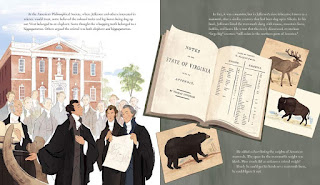Kralovansky.
The Facebook Discussion from NF Fest
Recently we've had an in-depth Facebook discussion about the nomenclature of "informational fiction" vs. "nonfiction." Melissa Stewart, who I consider an authority on the subject, has given us definitions and examples of each, yet confusion still remains.
From our discussion, Melissa indicated, "An informational fiction book has some documented information and some made up parts." She goes on to say that labeling a book as informational fiction alerts readers "to the fact that some of the info in the book is made up. We need to be honest with them." I agree.
Some writers in the NF Fest suggested libraries create a separate section for informational fiction. However, this may be problematic for school librarians who have cataloging done by library jobbers such as Follett. (Note that many school librarians are in charge of several buildings and don't have the time to catalog.)
Another trend nonfiction writers need to know about is the "genrification" of library collections. To gentrify is to arrange a library by category to make book location easier, similar to bookstores. Some libraries may only genrify fiction (all dragon books shelved as a subgenre in fantasy.) Other school libraries may place all fiction, nonfiction, biographies and picture books together in genres such as war, sports or supernatural. (They ditched the Dewey Decimal system.) School librarian and nonfiction author Marcie Flincum Atkins said, "Books that haven't moved in years are getting lots of love." It transformed her circulation numbers - data that administrators understand when determining library budgets.
Melissa Stewart and I continued our discussion privately where she shed more light on this topic.
- First, wholesalers are already tagging informational fiction in their databases, so it's no longer a matter of debate as to whether people agree to the term "informational fiction." As Melissa states, "It's part of the landscape."
- Stay tuned for Melissa's new book this fall from Stenhouse about the classification of nonfiction and the research showing that many kids prefer expository nonfiction. She does discuss informational fiction in this book, but it isn't a major focus.
- Finally, here's a blurb from Stenhouse, a publisher that provides professional resources for educators. 5 Kinds of Nonfiction: Enriching Reading and Writing Instruction with Children's Books highlights more than 150 high-quality children's nonfiction titles for K-8. It provides strategies for building strong, diverse classroom and library collections and includes 22 innovative reading and writing activities that show teachers how to utilize the many wonderful nonfiction children's books being published today. This book will be a boon for writers, too.
NF vs. Informational Fiction Exercise
As a former school librarian, I'm sharing a process of determining whether these exemplary books are informational fiction or nonfiction.
- If one turns to the dedication pages and looks at the CIP, Cataloging-In-Publishing data, we see their Dewey Decimal numbers - 599.7695 for Sea Otter Heroes and 571.78 for Wait, Rest, Pause.

Patricia's book - DDC 599.7695 - They are both by Millbrook Press, a well-respected name in nonfiction.
- They have back matter that includes further reading, web sites, photo acknowledgments, and acknowledgments of subject matter experts who have provided information or vetted the book.

Marcie's book back matter
- The writing uses extended metaphors and a first person POV to give facts about the ocean.
- From the book one can pick out the facts: "I am the blue water at the beach, the waves, mist and storms. That salty smell is me, too. / I stretch from the icy poles, North and South. I rub shoulders with North America and bump into Africa. I slosh around South American and crash into Europe.
- The Cataloging-In-Publishing data indicates no actual Dewey number but places it in "E" (a designator for picture books organized by author's last name). The cataloging summary indicate the text gives characteristics "as described by the ocean itself." The ocean is speaking. That is a fictional element.

Can you find the "E" designator and heading "Fiction"?
Head over to the NF Fest and join in the Facebook discussion and go to the web site to read posts. You may want to try these exercises with students or for yourself asking questions like this: 1. Can you identify the real stuff and the made up parts? 2. Can you figure out why the author included them? 3. Is it NF or IF? Happy classifying.

















